New Science From Our Mission To Touch The Sun
New Science from our Mission to Touch the Sun

In August 2018, our Parker Solar Probe mission launched to space, soon becoming the closest-ever spacecraft from the Sun. Now, scientists have announced their first discoveries from this exploration of our star!
The Sun may look calm to us here on Earth, but it's an active star, unleashing powerful bursts of light, deluges of particles moving near the speed of light and billion-ton clouds of magnetized material. All of this activity can affect our technology here on Earth and in space.
Parker Solar Probe's main science goals are to understand the physics that drive this activity — and its up-close look has given us a brand-new perspective. Here are a few highlights from what we've learned so far.
1. Surprising events in the solar wind
The Sun releases a continual outflow of magnetized material called the solar wind, which shapes space weather near Earth. Observed near Earth, the solar wind is a relatively uniform flow of plasma, with occasional turbulent tumbles. Closer to the solar wind's source, Parker Solar Probe saw a much different picture: a complicated, active system.
One type of event in particular drew the eye of the science teams: flips in the direction of the magnetic field, which flows out from the Sun, embedded in the solar wind. These reversals — dubbed "switchbacks" — last anywhere from a few seconds to several minutes as they flow over Parker Solar Probe. During a switchback, the magnetic field whips back on itself until it is pointed almost directly back at the Sun.

The exact source of the switchbacks isn't yet understood, but Parker Solar Probe's measurements have allowed scientists to narrow down the possibilities — and observations from the mission's 21 remaining solar flybys should help scientists better understand these events.
2. Seeing tiny particle events
The Sun can accelerate tiny electrons and ions into storms of energetic particles that rocket through the solar system at nearly the speed of light. These particles carry a lot of energy, so they can damage spacecraft electronics and even endanger astronauts, especially those in deep space, outside the protection of Earth's magnetic field — and the short warning time for such particles makes them difficult to avoid.

Energetic particles from the Sun impact a detector on ESA & NASA's SOHO satellite.
Parker Solar Probe's energetic particle instruments have measured several never-before-seen events so small that all trace of them is lost before they reach Earth. These instruments have also measured a rare type of particle burst with a particularly high number of heavier elements — suggesting that both types of events may be more common than scientists previously thought.
3. Rotation of the solar wind
Near Earth, we see the solar wind flowing almost straight out from the Sun in all directions. But the Sun rotates as it releases the solar wind, and before it breaks free, the wind spins along in sync with the Sun's surface. For the first time, Parker was able to observe the solar wind while it was still rotating – starting more than 20 million miles from the Sun.

The strength of the circulation was stronger than many scientists had predicted, but it also transitioned more quickly than predicted to an outward flow, which helps mask the effects of that fast rotation from the vantage point where we usually see them from, near Earth, about 93 million miles away. Understanding this transition point in the solar wind is key to helping us understand how the Sun sheds energy, with implications for the lifecycles of stars and the formation of protoplanetary disks.
4. Hints of a dust-free zone
Parker also saw the first direct evidence of dust starting to thin out near the Sun – an effect that has been theorized for nearly a century, but has been impossible to measure until now. Space is awash in dust, the cosmic crumbs of collisions that formed planets, asteroids, comets and other celestial bodies billions of years ago. Scientists have long suspected that, close to the Sun, this dust would be heated to high temperatures by powerful sunlight, turning it into a gas and creating a dust-free region around the Sun.

For the first time, Parker's imagers saw the cosmic dust begin to thin out a little over 7 million miles from the Sun. This decrease in dust continues steadily to the current limits of Parker Solar Probe's instruments, measurements at a little over 4 million miles from the Sun. At that rate of thinning, scientists expect to see a truly dust-free zone starting a little more than 2-3 million miles from the Sun — meaning the spacecraft could observe the dust-free zone as early as 2020, when its sixth flyby of the Sun will carry it closer to our star than ever before.
These are just a few of Parker Solar Probe's first discoveries, and there's plenty more science to come throughout the mission! For the latest on our Sun, follow @NASASun on Twitter and NASA Sun Science on Facebook.
More Posts from Nasa and Others
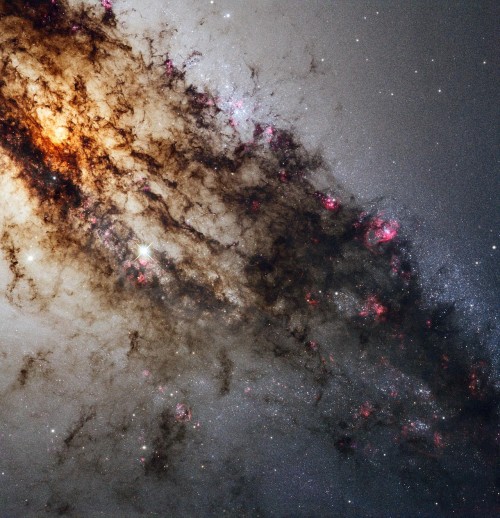
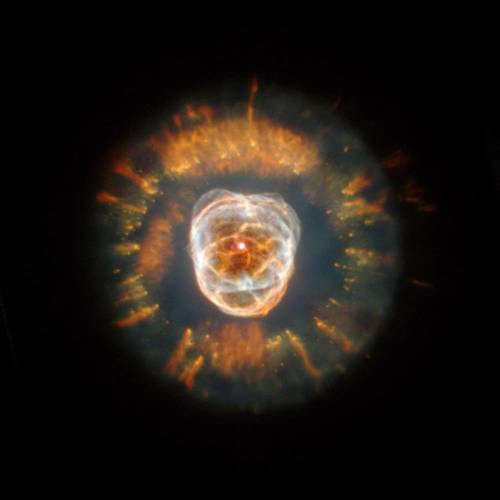
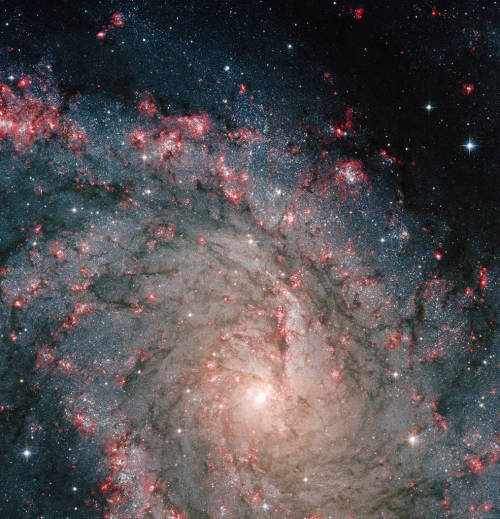
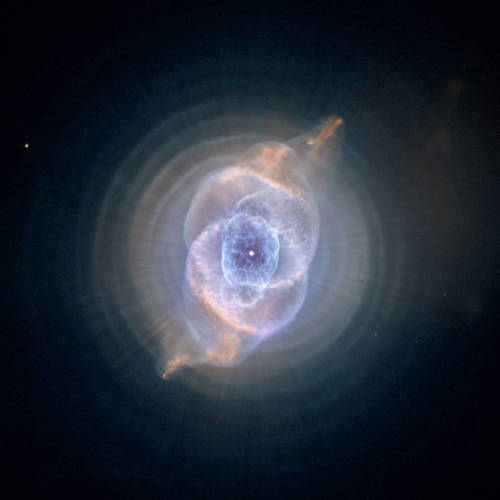
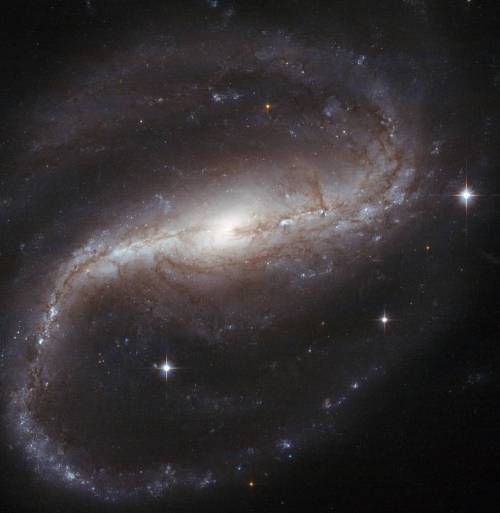
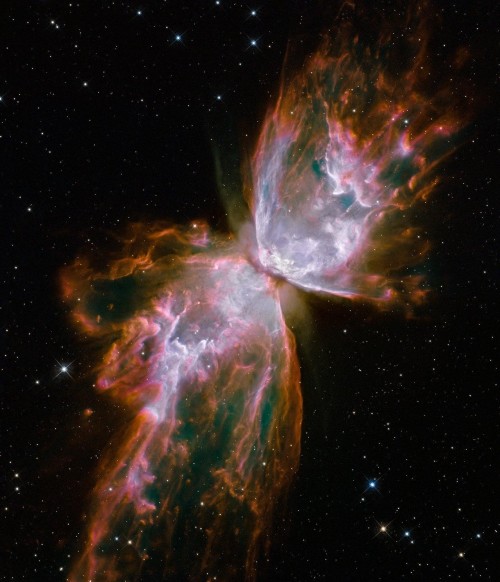

Be your own explorer ✨the cosmos is waiting...
From nearby clouds of gas and dust to remote galaxies that formed billions of years ago, tour the night sky with our Hubble Space Telescope’s new Caldwell catalog. The catalog of star clusters, galaxies and nebulas was first produced to highlight cosmic wonders visible to amateur astronomers. Since then Hubble has taken images of 95 out of the 109 objects, bringing these objects to life in exquisite detail.
While the objects can be observed using modest ground-based telescopes, Hubble’s Caldwell collection has been assembled for astronomers to see the finer details of each object in the night sky.
View the full collection here!
Make sure to follow us on Tumblr for your regular dose of space: http://nasa.tumblr.com.
Capturing Space Stories, One Click at a Time!
It’s World Photography Day!
To celebrate the occasion, we’re sharing photos from our photographers that chronicle what's making news across the agency - from launches and landings to important science announcements to images taken from the vantage point of space.
Take a look!
A Closer View of the Moon

Posted to Twitter by European Space Agency astronaut Alexander Gerst, this image shows our planet's Moon as seen from the International Space Station. As he said in the tweet, "By orbiting the Earth almost 16 times per day, the #ISS crew travel the distance to the Moon and back – every day. #Horizons"
The International Space Station is the world's only orbital laboratory. An international partnership of space agencies provides and operates the elements of the station. The principals are the space agencies of the United States, Russia, Europe, Japan and Canada.
Photo Credit: NASA
Spacewalk Selfie

NASA astronaut Ricky Arnold took this selfie during the May 16, 2018, spacewalk to perform upgrades on the International Space Station, saying in a tweet "An amazing view of our one and only planet."
Arnold and fellow spacewalker Drew Feustel donned spacesuits and worked for more than six hours outside the station to finish upgrading cooling system hardware and install new and updated communications equipment for future dockings of commercial crew spacecraft.
Photo Credit: NASA
Preparing to Leave Earth

The mobile service tower at Space Launch Complex-3 is rolled back to reveal the United Launch Alliance Atlas-V rocket with NASA’s InSight spacecraft onboard, Friday, May 4, 2018, at Vandenberg Air Force Base in California. InSight, short for Interior Exploration using Seismic Investigations, Geodesy and Heat Transport, is a Mars lander designed to study the "inner space" of Mars: its crust, mantle, and core.
Photo Credit: NASA/Bill Ingalls
Launch Long Exposure

The United Launch Alliance Delta IV Heavy rocket is seen in this long exposure photograph as it launches NASA's Parker Solar Probe to touch the Sun, Sunday, Aug. 12, 2018 from Launch Complex 37 at Cape Canaveral Air Force Station, Florida. Parker Solar Probe is humanity’s first-ever mission into a part of the Sun’s atmosphere called the corona. Here it will directly explore solar processes that are key to understanding and forecasting space weather events that can impact life on Earth.
Photo Credit: NASA/Bill Ingalls
Waving Farewell

Expedition 56 flight engineer Serena Auñón-Chancellor of NASA waves farewell to family and friends as she and Soyuz Commander Sergey Prokopyev of Roscosmos and flight engineer Alexander Gerst of European Space Agency depart Building 254 for the launch pad a few hours before their launch, Wednesday, June 6, 2018 at the Baikonur Cosmodrome in Kazakhstan. Auñón-Chancellor, Prokopyev, and Gerst launched aboard the Soyuz MS-09 spacecraft at 7:12am EDT (5:12pm Baikonur time) on June 6 to begin their journey to the International Space Station.
Photo Credit: NASA/Victor Zelentsov
Launching Humans to Space

The Soyuz MS-09 rocket is launched with Expedition 56 Soyuz Commander Sergey Prokopyev of Roscosmos, flight engineer Serena Auñón-Chancellor of NASA, and flight engineer Alexander Gerst of ESA (European Space Agency), Wednesday, June 6, 2018 at the Baikonur Cosmodrome in Kazakhstan. Prokopyev, Auñón-Chancellor, and Gerst will spend the next six months living and working aboard the International Space Station.
Photo Credit: NASA/Joel Kowsky
Rethinking Aircraft Design

In an effort to improve fuel efficiency, NASA and the aircraft industry are rethinking aircraft design. Inside the 8’ x 6’ wind tunnel at NASA Glenn Research Center, engineers tested a fan and inlet design, commonly called a propulsor, which could use four to eight percent less fuel than today’s advanced aircraft.
Photo Credit: NASA/Rami Daud
Flying Observatory

SOFIA, the Stratospheric Observatory for Infrared Astronomy, is the largest airborne observatory in the world, capable of making observations that are impossible for even the largest and highest ground-based telescopes. During its lifetime, SOFIA also will inspire the development of new scientific instrumentation and foster the education of young scientists and engineers.
Photo Credit: NASA/SOFIA/Waynne Williams
Experimenting with Venus-like conditions

A close-up view of crystals that developed on materials exposed to conditions on Venus in NASA Glenn’s Extreme Environments Rig. This unique and world class ground-based test rig can accurately most simulate atmospheric conditions for any planet or moon in the solar system and beyond.
Photo Credit: NASA/Bridget Caswell
Honeycomb Close Up

A close-up view of 3-D printed honeycomb patterns made in NASA Glenn manufacturing lab using a method called binder jetting. The honeycomb structures can find use in several applications such as a strong core for lightweight sandwich panels, acoustic panels for noise attenuation and innovative cellular structures.
Photo Credit: NASA/Marvin Smith
To see even more photos of our space exploration efforts, visit us on Flickr: https://www.flickr.com/photos/nasahqphoto/.
Make sure to follow us on Tumblr for your regular dose of space: http://nasa.tumblr.com.
Carbon and Our Changing Climate

Carbon is the backbone of life on Earth. We are made of carbon, we eat carbon and our civilizations are built on carbon. We need carbon, but that need is also entwined with one of the most serious problems facing us today: global climate change.
Forged in the heart of aging stars, carbon is the fourth most abundant element in the Universe. Most of Earth’s carbon – about 65,500 billion metric tons – is stored in rocks. The rest is in the ocean, atmosphere, plants, soil and fossil fuels.

Over the long term, the carbon cycle seems to maintain a balance that prevents all of Earth’s carbon from entering the atmosphere, or from being stored entirely in rocks. This balance helps keep Earth’s temperature relatively stable, like a thermostat.

Today, changes in the carbon cycle are happening because of people. We disrupt the cycle by burning fossil fuels and clearing land. Our Orbiting Carbon Observatory-2 (OCO-2) satellite is providing our first detailed, global measurements of CO2 in the atmosphere at the Earth’s surface. OCO-2 recently released its first full year of data, critical to analyzing the annual CO2 concentrations in the atmosphere.
The above animation shows carbon dioxide released from two different sources: fires and massive urban centers known as megacities. The animation covers a five day period in June 2006. The model is based on real emission data and is then set to run so that scientists can observe how greenhouse gas behaves once it has been emitted.

All of this extra carbon needs to go somewhere. So far, land plants and the ocean have taken up about 55 percent of the extra carbon people have put into the atmosphere while about 45 percent has stayed in the atmosphere. The below animation shows the average 12-month cycle of all plant life on Earth (on land and in the ocean). Eventually, the land and oceans will take up most of the extra carbon dioxide, but as much as 20 percent may remain in the atmosphere for many thousands of years.

Excess carbon in the atmosphere warms the planet and helps plants on land grow more. Excess carbon in the ocean makes the water more acidic, putting marine life in danger. Forest and other land ecosystems are also changing in response to a warmer world. Some ecosystems -- such as thawing permafrost in the Arctic and fire-prone forests -- could begin emitting more carbon than they currently absorb.
To learn more about NASA’s efforts to better understand the carbon and climate challenge, visit: http://www.nasa.gov/carbonclimate/.
Make sure to follow us on Tumblr for your regular dose of space: http://nasa.tumblr.com
How did you choose your Flight Director name?
What is the best and worst thing about being in a zero gravity environment?
One Year Later
On March 1, 2016, veteran astronaut Scott Kelly returned from his Year in Space mission. In many ways, the adventure was just beginning.

The spaceflight part of the One Year Misson to the International Space Station ended a year ago today, but the science behind it is still moving. Astronaut Scott Kelly and Russian cosmonaut Mikhail Kornienko continue to provide samples for the data collection from their ground-breaking mission. Results are expected to to start coming later in 2017, which will help launch humanity on deep space missions.

Kelly not only commanded the International Space Station’s Expedition 46, he participated in spacewalks like this one on Dec. 21, 2015, in which Kelly and astronaut Tim Kopra successfully moved the Space Station's mobile transporter rail car ahead of the docking of a Russian cargo supply spacecraft.

On the station in 2015, Kelly showed off his home away from home. Scott tweeted this image out with the comment: "My #bedroom aboard #ISS. All the comforts of #home. Well, most of them. #YearInSpace."
Why was the Year In Space important? As we work to extend our reach beyond low-Earth orbit, how the human body reacts to microgravity for extended periods is of paramount importance. Not only were Kelly and his Russian counterpart monitored throughout the mission, they both continue to submit to tests and monitoring one year later to see if there are any lasting effects from their voyage aboard the station.
Scott Kelly also a human control here on Earth, his identical twin brother and fellow astronaut Mark Kelly. Both brothers have served aboard the International Space Station, but Scott’s stay was almost twice as long as typical U.S. missions. The continuing investigations are yielding beneficial knowledge on the medical, psychological and biomedical challenges faced by astronauts during long-duration spaceflight.
Each year we hold a Day of Remembrance. Today, Jan. 25, we pay tribute to the crews of Apollo 1 and space shuttles Challenger and Columbia, as well as other NASA colleagues who lost their lives while furthering the cause of exploration and discovery.
#NASARemembers
Learn more about the Day of Remembrance HERE.
Make sure to follow us on Tumblr for your regular dose of space: http://nasa.tumblr.com.
6 Tiny Satellites That Are Changing How We See Earth

HARP: Hyper-Angular Rainbow Polarimeter
What’s better than taking a picture of a cloud to figure out its size and shape? Taking a bunch of pictures all around it. That way you get a three-dimensional view without having to worry about missing something. The HARP CubeSat is going to do just that: make observations of cloud droplets and tiny airborne particles like soot and dust with a modified camera lens from multiple angles. This will give us a full rendering of what’s going on inside the clouds, specifically, how those airborne particles act as “seeds” for water vapor to condense on and form cloud droplets. Since so many of those particles are in the air as a result of man-made pollution, we want to understand how they may be affecting clouds, weather and climate.

RAVAN: Radiometer Assessment using Vertically Aligned Nanotubes
Anyone who’s worn a black shirt on a summer day knows how much sunlight and heat it absorbs. The RAVAN 3-unit CubeSat, however, carries “blacker than black” technology – carbon nanotubes set up like a bundle of drinking straws that suck up nearly all the sunlight and energy that reach them to the point that your black shirt seems merely dark grey in comparison. Flying in low Earth orbit, RAVAN’s super sensitive instrument will detect tiny changes in the amount of sunlight and energy passing into and out of the top of the atmosphere. The amount of energy passing through the top of the atmosphere is where the net accounting of Earth’s energy budget happens – one of the major measurements we need in order to understand the effects of greenhouse gases on global warming and climate change.

MiRaTA: Microwave Radiometer Technology Acceleration
That long skinny piece coming out of the bottom right side under the solar panel? That’s a measuring tape. It’s doubling as a communications antenna on the MiRaTA CubeSat that will be a mini-weather station in space. This 3-unit, shoe box-sized satellite is testing out new, miniaturized technology to measure temperature, water vapor, and cloud ice in the atmosphere. They’ll be tracking major storms, including hurricanes, as well as everyday weather. If this test flight is successful, the new, smaller technology will likely be incorporated into major – large – weather satellite missions in the future that are part of our national infrastructure.

IceCube
The aptly named IceCube will measure – you guessed it – ice in our atmosphere. Unlike the droplets that make up rain, ice is one of the harder things to measure from space. IceCube is a 3-unit CubeSat about the size of a loaf of bread outfitted with a new high-frequency microwave radiometer, an instrument that measures naturally occurring radiation emitted by stuff in the atmosphere – cloud droplets, rain, and the ice particles at the tops of clouds. This will be the first space test of the new microwave radiometer that has to balance its tiny size and low power with being sensitive enough to detect cloud ice.

CYGNSS: Cyclone, Global Navigation Satellite System
What do GPS signals do when they’re not talking to your phone? A lot of them are just bouncing harmlessly off the planet’s surface – a fact that the CYGNSS mission is taking advantage of to measure wind speed over the ocean. Eight identical small satellites, each about the size of a microwave oven, flying in formation carry custom modified GPS receivers pointed at the oceans. When the water is smooth – not windy – the GPS signals reflect back uniformly, like the moon on a pond reflected as if in a mirror. When the water is choppy – windy – the signals reflect back in in the same direction but distorted, like the moon reflection on a choppy pond being distorted by ripples. Flying eight satellites in formation means the CYGNSS mission can measure wind speed across more of the ocean at once, which will help with understanding tropical storms and hurricanes.

TROPICS: Time-Resolved Observations of Precipitation structure and storm Intensity with a Constellation of Smallsats
An important way to improve forecasts of hurricane and tropical cyclone intensity is to see what’s going on inside and around them while they’re happening. That’s the goal of the TROPICS mission, 12 CubeSats that will fly in formation to track the temperature and humidity of storm environments. The TROPICS CubeSats will get very frequent measurements, similar to X-rays, that cut through the overall cloud-cover so we can see the storm’s underlying structure. The storm structures known as the eyewall – tall clouds, wind and rain around the eye – and rainbands – the rainy parts of the spiral arms – give us clues about whether a storm is primed to intensify into a category 4 or 5 storm, something everyone in their path needs to know.
Learn more the world of small satellites at: https://www.nasa.gov/mission_pages/smallsats
Make sure to follow us on Tumblr for your regular dose of space: http://nasa.tumblr.com
Meet Our Latest CubeSats
When the next Orbital ATK cargo mission to the International Space Station blasts off from Wallops Flight Facility in Virginia on May 20 at 5:04 a.m. EDT carrying science and supplies, the Cygnus spacecraft will also be carrying a few of our latest CubeSats.

The International Space Station is often used to deploy small satellites, a low-cost way to test technology and science techniques in space.

On board this time, for deployment later this summer, are...
The ‘Rabbit’ in the RainCube
As its name suggests, RainCube will use radar to measure rain and snowfall. CubeSats are measured in increments of 1U (A CubeSat unit, or 1U, is roughly equivalent to a 4-inch box, or 10x10x10 centimeters). The RainCube antenna has to be small enough to be crammed into a 1.5U container; the entire satellite is about as big as a cereal box.
"It's like pulling a rabbit out of a hat," said Nacer Chahat, a specialist in antenna design at our Jet Propulsion Laboratory. "Shrinking the size of the radar is a challenge for us. As space engineers, we usually have lots of volume, so building antennas packed into a small volume isn't something we're trained to do."

That small antenna will deploy in space, like an upside-down umbrella. To maintain its small size, the antenna relies on the high-frequency Ka-band wavelength – good for profiling rain and snow. Ka-band also allows for an exponential increase in sending data over long distances, making it the perfect tool for telecommunications.
Peering Into Clouds

TEMPEST-D will also study weather. Temporal Experiment for Storms and Tropical Systems – Demonstration (TEMPEST-D) has satellite technology with the potential to measure cloud and precipitation processes on a global basis. These measurements help improve understanding of Earth’s water cycle and weather predictions, particularly conditions inside storms.

TEMPEST-D millimeter-wave observations have the ability to penetrate into clouds to where precipitation initiation occurs. By measuring the evolution of clouds from the moment of the onset of precipitation, a future TEMPEST constellation mission could improve weather forecasting and improve our understanding of cloud processes, essential to understanding climate change.
Cutting Through the Noise

CubeRRT, also the size of a cereal box, will space test a small component designed to detect and filter radio frequency interference (RFI). RFI is everywhere, from cellphones, radio and TV transmissions, satellite broadcasts and other sources. You probably recognize it as that annoying static when you can’t seem to get your favorite radio station to come in clearly because another station is nearby on the dial.

The same interference that causes radio static also affects the quality of data that instruments like microwave radiometers collect. As the number of RFI-causing devices increases globally, our satellite instruments – specifically, microwave radiometers that gather data on soil moisture, meteorology, climate and more – will be more challenged in collecting high-quality data.
That’s where CubeSat Radiometer Radio frequency interference Technology (CubeRRT) comes in. The small satellite will be carrying a new technology to detect and filter any RFI the satellite encounters in real-time from space. This will reduce the amount of data that needs to be transmitted back to Earth – increasing the quality of important weather and climate measurements.
Searching the Halo of the Milky Way

Did you know that we’re still looking for half of the normal matter that makes up the universe? Scientists have taken a census of all the stars, galaxies and clusters of galaxies — and we’re coming up short, based on what we know about the early days of the cosmos.
That missing matter might be hiding in tendrils of hot gas between galaxies. Or it might be in the halos of hot gas around individual galaxies like our own Milky Way. But if it’s there, why haven’t we seen it? It could be that it’s so hot that it glows in a spectrum of X-rays we haven’t looked at before.

Image Credit: Blue Canyon Technologies
Enter HaloSat. Led by the University of Iowa, HaloSat will search the halo of the Milky Way for the emissions oxygen gives off at these very high temperatures. Most other X-ray satellites look at narrow patches of the sky and at individual sources. HaloSat will look at large swaths of the sky at a time, which will help us figure out the geometry of the halo — whether it surrounds the galaxy more like a fried egg or a sphere. Knowing the halo’s shape will in turn help us figure out the mass, which may help us discover if the universe’s missing matter is in galactic halos.
CubeSats for All
Small satellites benefit Earth and its people (us!) in multiple ways. From Earth imaging satellites that help meteorologists to predict storm strengths and direction, to satellites that focus on technology demonstrations to help determine what materials function best in a microgravity environment, the science enabled by CubeSats is diverse.

They are also a pathway to space science for students. Our CubeSat Launch initiative (CSLI) provides access to space for small satellites developed by our Centers and programs, educational institutions and nonprofit organizations. Since the program began, more than 50 educational CubeSats have flown. In 2016, students built the first CubeSat deployed into space by an elementary school.
Learn more about CubeSats HERE.
Make sure to follow us on Tumblr for your regular dose of space: http://nasa.tumblr.com.
Is Earth your favorite planet? Why or why not?
-
 virtuosojo liked this · 1 year ago
virtuosojo liked this · 1 year ago -
 vaseshipghost reblogged this · 1 year ago
vaseshipghost reblogged this · 1 year ago -
 vaseshipghost liked this · 1 year ago
vaseshipghost liked this · 1 year ago -
 gremlinsaurus liked this · 1 year ago
gremlinsaurus liked this · 1 year ago -
 uriigamii liked this · 1 year ago
uriigamii liked this · 1 year ago -
 naomiinyun liked this · 1 year ago
naomiinyun liked this · 1 year ago -
 renaissage liked this · 2 years ago
renaissage liked this · 2 years ago -
 thistrashisreadytobash liked this · 4 years ago
thistrashisreadytobash liked this · 4 years ago -
 buskuta liked this · 4 years ago
buskuta liked this · 4 years ago -
 aureliamorningstar24 liked this · 4 years ago
aureliamorningstar24 liked this · 4 years ago -
 findingmyselfatm liked this · 4 years ago
findingmyselfatm liked this · 4 years ago -
 demtones liked this · 4 years ago
demtones liked this · 4 years ago -
 fotecho liked this · 4 years ago
fotecho liked this · 4 years ago -
 famouspastapersonshark liked this · 4 years ago
famouspastapersonshark liked this · 4 years ago -
 laurence1211 liked this · 4 years ago
laurence1211 liked this · 4 years ago -
 honestlybabyitscool liked this · 4 years ago
honestlybabyitscool liked this · 4 years ago -
 vergeofinsanity liked this · 4 years ago
vergeofinsanity liked this · 4 years ago -
 cliffsteele reblogged this · 4 years ago
cliffsteele reblogged this · 4 years ago -
 cliffsteele liked this · 4 years ago
cliffsteele liked this · 4 years ago -
 mossworshipper liked this · 4 years ago
mossworshipper liked this · 4 years ago -
 milkhoney531 reblogged this · 4 years ago
milkhoney531 reblogged this · 4 years ago -
 milkhoney531 liked this · 4 years ago
milkhoney531 liked this · 4 years ago -
 walkingonsunshine liked this · 4 years ago
walkingonsunshine liked this · 4 years ago -
 themanwiththeplan liked this · 4 years ago
themanwiththeplan liked this · 4 years ago -
 poemsandknowledge liked this · 4 years ago
poemsandknowledge liked this · 4 years ago -
 night-hides-the-world reblogged this · 4 years ago
night-hides-the-world reblogged this · 4 years ago -
 justanothervirus liked this · 4 years ago
justanothervirus liked this · 4 years ago -
 confirmedworm liked this · 4 years ago
confirmedworm liked this · 4 years ago -
 locurasindelirios liked this · 4 years ago
locurasindelirios liked this · 4 years ago -
 lunadevilstar liked this · 4 years ago
lunadevilstar liked this · 4 years ago -
 lee-lee-la liked this · 5 years ago
lee-lee-la liked this · 5 years ago -
 freeturtleclamdeputy liked this · 5 years ago
freeturtleclamdeputy liked this · 5 years ago -
 rata-anarquista liked this · 5 years ago
rata-anarquista liked this · 5 years ago -
 snailswithwings reblogged this · 5 years ago
snailswithwings reblogged this · 5 years ago -
 pinkiepieaddict reblogged this · 5 years ago
pinkiepieaddict reblogged this · 5 years ago -
 7tseven liked this · 5 years ago
7tseven liked this · 5 years ago -
 cherryobvious liked this · 5 years ago
cherryobvious liked this · 5 years ago
Explore the universe and discover our home planet with the official NASA Tumblr account
1K posts